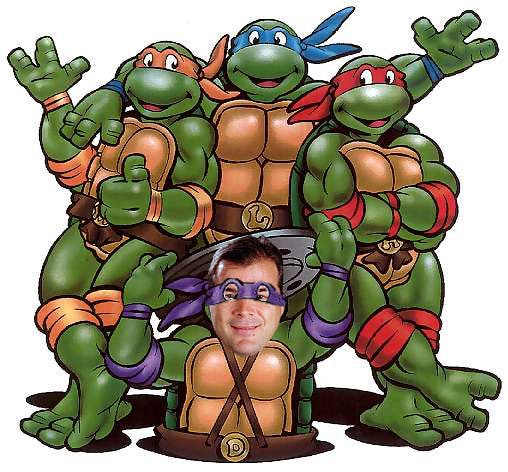Vigneault’s Defensive Shell

It’s hard to "lose the room" when you have sweet Ninja Skills.
Photoshop work courtesy sworn enemy Harrison Mooney.
Several weeks ago, Canucks fans were lamenting the hockey club’s lack of effort. A hypothesis emerged that held that the team, content with a second place finish in the West, had activated "Operation Don’t Get Hurt," and there was a fair bit of convincing evidence that this was, in fact, the case. Of course, the Canucks then showed up to play for real in Chicago, Daniel Sedin was knocked out of the lineup by probably the single dirtiest cheap-shot of this past NHL season, and though the Canucks went on to lose that game in overtime – a fire seemed to be lit under the respective posteriors of the team. Since then the Canucks have reeled off six straight wins on the back of stellar goaltending, and suffocating defense.
Read on past the jump!
Including the game against the Blackhawks, the Canucks have allowed nine goals in the past seven games, posting a 1.28 goals against average as a team. The club’s overall stinginess has been essential, as they’ve only managed 16 goals-for over the same time frame, or 1.78 goals per game during the winning streak. That’s a far cry from the high flying goal totals from last season and even from the earlier parts of this season (they had scored 223 goals in the 72 games before playing Chicago, an average of 3.09 goals for per game).
Even more troubling for the doom and gloom set than the Canucks’ lack of production, is the amount of shots they’re surrendering (34.71 per game since Chicago). They’ve outshot only one opponent (Dallas twice) in the past seven contests, and have fallen into the bottom-10 in the NHL in terms of "shots allowed per game." Even a cursory glance at the club’s underlying numbers over the past couple of weeks, reveals several extraordinarily unsustainable, and worrying trends:
| SOG% | Fenwick% | 5-on-5 SV% | |
|---|---|---|---|
| Games 1-71 | 50.3% | 51.5% | 0.928% |
| Games 72-79 | 45.4% | 47.9% | 0.970% |
Now it would be easy to say that the Canucks possession game has cratered, and that what they’re going through at the moment is a return to the "rope-a-dope" form they showed in January, but that’s not all that’s going on here. While the Canucks overall five-on-five possession game has gone down the toilet (much like the Ninja Turtles did in their origin story, before Michael Bay made them aliens because he’s an irredeemable hack and a serial ruiner of my favorite childhood cartoons), their performance with the score-tied during the recent winning streak has actually been quite dominant:
| SOG% | Fenwick% | |
|---|---|---|
| Games 1-71 Scored-Tied | 50.4% | 52.2% |
| Games 72-79 Score-Tied | 53.2% | 55.8% |
Cam Charron pointed out a few weeks ago that Vigneault has been more conservative this season than he has in years past, and it looks like that trend has accelerated since Daniel’s injury. The Canucks are clearly able to control games, but once they’re up, they’re going into a defensive shell and holding on for dear life!
Of late the shell has worked of late, and the team is back in first in the Western Conference as a result. While the team’s "true" ability to control games probably lies closer to their performance in score-tied situations, than it does to their overall possession numbers. Heading into the postseason, however, it would be nice to see the Canucks do better to control games overall, and try to put the opposition away sometimes. As far as I’m concerned, failing to do so is playing with fire.
Let’s turn to our in-house chance data to further illustrate the Canucks’ "more conservative than Rand Paul" systems play of late. While the Canucks have been out-shot consistently during this winning streak, in terms of "quality-shots" they’re playing their opponents about even. Overall, the club has controlled 49.7% of even-strength scoring chances over the past seven games, which, is a significantly higher rate of event control than their shots on goal% (see the first table).
The chance data makes even more conspicuous the difference between the Canucks play with the score tied, versus their performance in other game-state situations. Vancouver’s club has controlled 62% of scoring chances with the score-tied over the last seven games, but only 43.7% of scoring chances once they’ve attained the lead. I may not like it philosophically, but if it works, it works.
Recent articles from Thomas Drance





